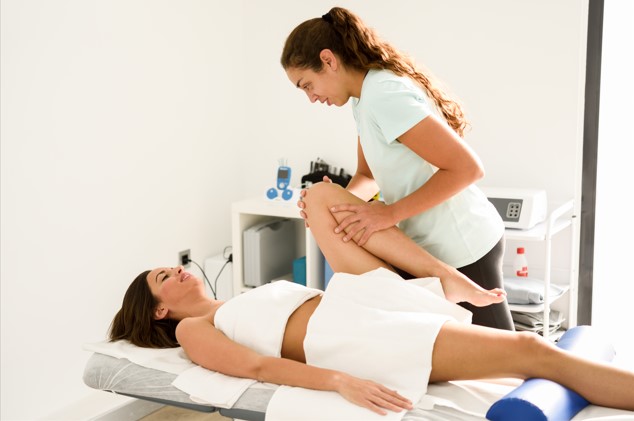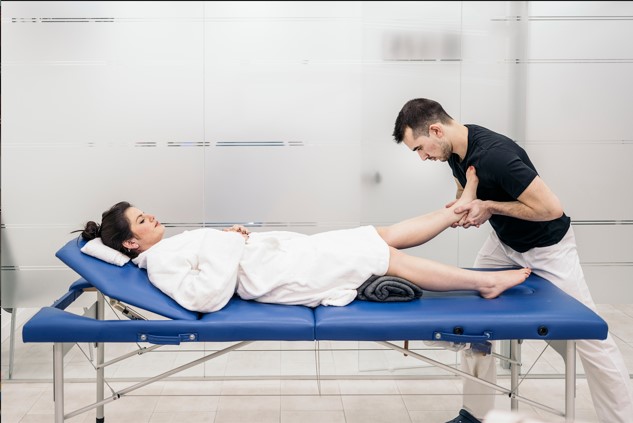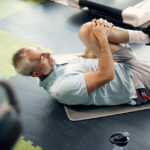The tendinitis in the knee It is a painful condition that affects many people, especially those who perform high impact physical activities. This condition is characterized by inflammation of the tendons surrounding the knee joint. Throughout this article, we will explore in depth what tendinitis in the knee is, its causes, symptoms, diagnosis, treatment and prevention.

Knee tendinitis is a injury common that affects athletes and active people. It occurs when the tendons that connect the muscles to the bones in the knee become inflamed. This inflammation It can be painful and limit your ability to move normally.
The tendonitis in the knee it is usually caused due to excessive use of the joint. Repetitive activities such as running, jumping, or playing sports that involve sudden movements can put excessive stress on the tendons in the knee. Besides, the lack of warming proper before exercise, overtraining and poor technique can also contribute to this condition.
Symptoms of knee tendonitis
The symptoms of tendinitis in the knee can vary, but generally include pain, sensitivity and swelling in the affected area. The pain usually gets worse during or after physical activity. There may also be stiffness in the joint and discomfort when moving the knee.
Diagnosis
A doctor can to diagnose tendonitis in the knee through a physical examination and an evaluation of the patient's symptoms. In some cases, imaging tests, such as x-rays or MRIs, may be performed to rule out other possible injuries.
Prevention
For prevent tendinitis in the knee, it is essential to warm up properly before physical activity and use the appropriate equipment. It is important to gradually increase the intensity and duration of exercise to give the body time to adapt. Maintaining good movement technique and performing strengthening exercises can help reduce the risk of developing this condition.
The role of physical therapy in knee tendonitis
Knee tendonitis is a painful condition that can affect your quality of life and limit your daily activities. Fortunately, physical therapy is presented as a effective tool to help you overcome this obstacle and live pain-free again.
The physiotherapy plays a fundamental role in the treatment of knee tendonitis. Physical therapists are highly trained professionals who understand the anatomy and biomechanics of the human body. Working closely with you and your doctor, they will develop a personalized treatment plan to address your specific needs.
Evaluation and planning
The process begins with a assessment exhaustive of your condition. The physiotherapist will analyze your symptoms, medical history and lifestyle to understand the extent of the injury. With this information in mind, he or she will design a treatment plan that may include stretching, strengthening, and mobilization exercises, all tailored to your fitness level and individual needs.
Specific exercises
Exercises are an integral part of physiotherapy therapy for knee tendonitis. Through specific exercises, you will be able to strengthen the muscles surrounding the knee and improve joint stability. These exercises not only relieve pressure on the affected tendons, but also help prevent future injuries.
Pain management techniques for knee tendonitis
He pain It is a constant concern for those who suffer from knee tendinitis. The physiotherapists They use various pain management techniques, such as manual therapy and the application of heat or cold, to relieve discomfort and promote muscle relaxation. Are techniques They contribute significantly to your comfort during the recovery process.
Education and prevention
A valuable aspect of physical therapy is the education it provides. Physiotherapists will provide you information on how to properly care for your knee, how to make safe movements and how to avoid actions that could aggravate the injury. With their guidance, you will be better equipped to prevent future episodes of knee tendonitis.

Incorporating a comprehensive approach
Importantly, physical therapy is not only about relieving current symptoms, but also about prevent recurrences. As you work with your physical therapist, you will build a solid foundation of strength and mobility that benefits long-term. Physical therapy not only addresses the condition itself, but also works in conjunction with your body to promote healing.
Knee tendonitis is a painful condition that can affect the quality of life of those who suffer from it. However, with the approach suitable in the treatment and prevention, it is possible to reduce the risk of suffering this injury. If you experience symptoms of tendinitis in the knee, it is important to consult a healthcare professional to receive an accurate diagnosis and appropriate treatment plan. Remember that taking care of your body and taking preventative measures can make a big difference in your long-term physical well-being.
If you are dealing with knee tendonitis and want to experience the benefits of physical therapy firsthand, we invite you to contact us. In Retirement Clinics our equipment of highly trained physical therapists is ready to help you on your road to recovery. You don't have to deal with knee tendonitis alone; We are here to provide you with the support you need. Do not doubt contact us to schedule your appointment and take the first step towards a pain-free life.





